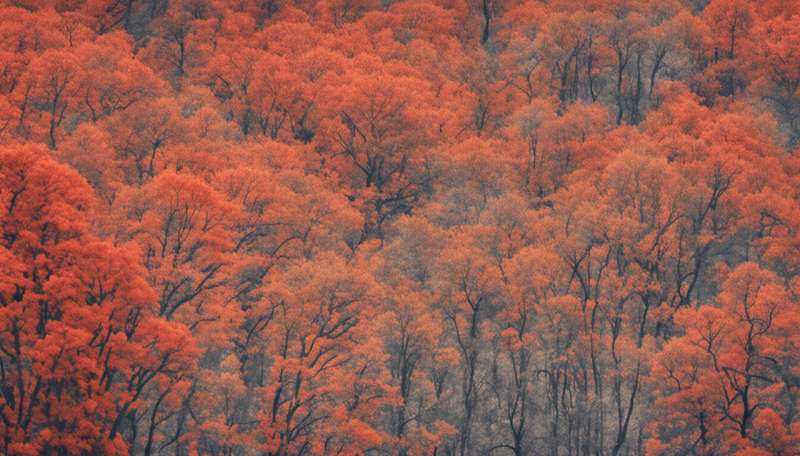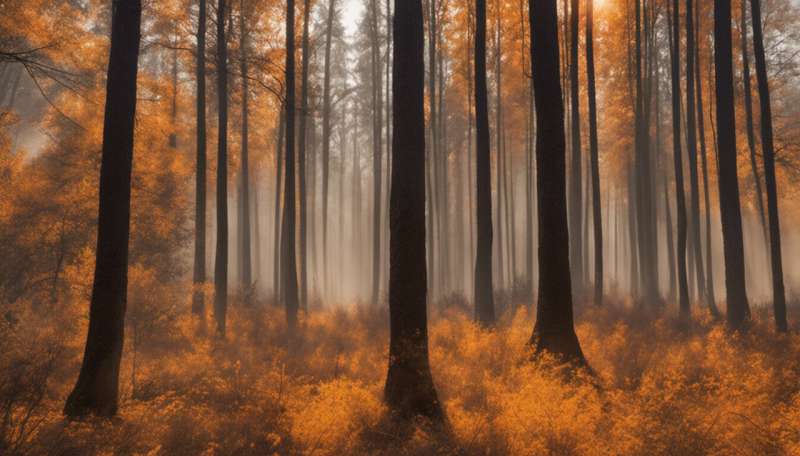Prepare for the worst: 10 steps to get ready for wildfire smoke

The wildfire season in western North America and the .
On top of the concerning environmental conditions, more people are spending more time outdoors due to the ongoing COVID-19 pandemic. Given that , the summer of 2021 has the than any season before it.
The direct threat of wildfire affects people near forests, but smoke can travel for thousands of kilometers to areas far away. Over the past decade, we have experienced prolonged periods when .
Exposure to wildfire smoke is associated with a range of acute effects, . Evidence of is also starting to emerge.
Outdoor air pollution from vehicles and industry can be reduced though new laws and technologies, but that's not true for wildfire smoke. In addition, we can't stop breathing when it's smoky and it's not practical to relocate to less smoky locations.
Wildfire smoke is both inevitable and largely unpredictable, so we need to become resilient to smoke by changing our activities and behaviors to limit exposure and protect health.
10 steps: Planning, air cleaners, masks and more
Being prepared for smoke episodes before they occur can reduce fear and uncertainty when air quality starts to deteriorate. Research indicates that , and that they have better mental and physical health outcomes than those who were less prepared.
Here are 10 steps to help you develop a plan for the wildfire smoke season ahead.
1. Understand your household risk. Some people are more likely to experience negative health effects from smoke, especially those who have . Pregnant women, infants, young children, older adults are also more sensitive to smoke, and people who work or live outdoors are more exposed. If smoke has made someone feel unwell in the past, it will likely make them feel unwell again.

2. Identify others you want to support. There may be people outside your household you want to help during a smoke episode, particularly older adults in your family or community. Keep them in mind as you develop your plans.
3. Review medical management plans. Anyone who has a chronic disease with a should consult with their doctor about adapting it for smoky conditions. For example, people with asthma and COPD are particularly sensitive to smoke, and evidence suggests that .
4. Stock up on rescue medications. There can be high demand for medications such as inhalers when it gets smoky, and highly sensitive people may be less mobile. It is best to stock up on these medications before the season begins, so they are readily available when needed. Always travel with your rescue medications during wildfire season.
5. Consider purchasing a portable air cleaner. Most people spend . Portable air cleaners with HEPA filters can significantly reduce when sized and used properly. There are many options on the market, so do some research to find the best option for your space. .
6. Get ready to shelter in place. Think about how to keep the air in your home (or areas of your home, especially bedrooms) cleaner by closing windows, running your forced air system on recirculate and using portable air cleaners. Beware of getting too hot, though— for most people.
7. Find good masks for time outdoors. A well-fitted respirator mask (common types are N95, KN95 and KF94) provides the , and these have become easier to find since the COVID-19 pandemic. We have also learned that a . The fit is key—inhaled air must pass through the material of the mask, not around it. People who work outdoors should consult their occupational health and safety professionals before the season begins.
8. Use technology to your advantage. Applications such as and (in Canada) and and (in the U.S.) can help you keep track of current conditions and air quality forecasts. Some local agencies provide email and text services to notify subscribers about changing conditions—Google can probably help you find them!
9. Bookmark important information. In the morning, check the , and smoke forecasts for the day. These can help you to understand where fires are currently burning, and where the smoke is likely to travel. You can also bookmark tips for coping with smoke when it happens.
10. Connect with others about smoke. Talk to your family and community about your planning process and help others to think through their own preparations. The more we get ready for smoke before the wildfire season starts, the more resilient we will be when the smoke arrives.
It's impossible to predict when and where extreme wildfire smoke will occur, but we know that our wildfire seasons are getting longer and more severe. We must head into every new wildfire season by preparing for the worst. It's not optimistic and it's not pessimistic—it's just realistic .
Provided by The Conversation
This article is republished from under a Creative Commons license. Read the .![]()















